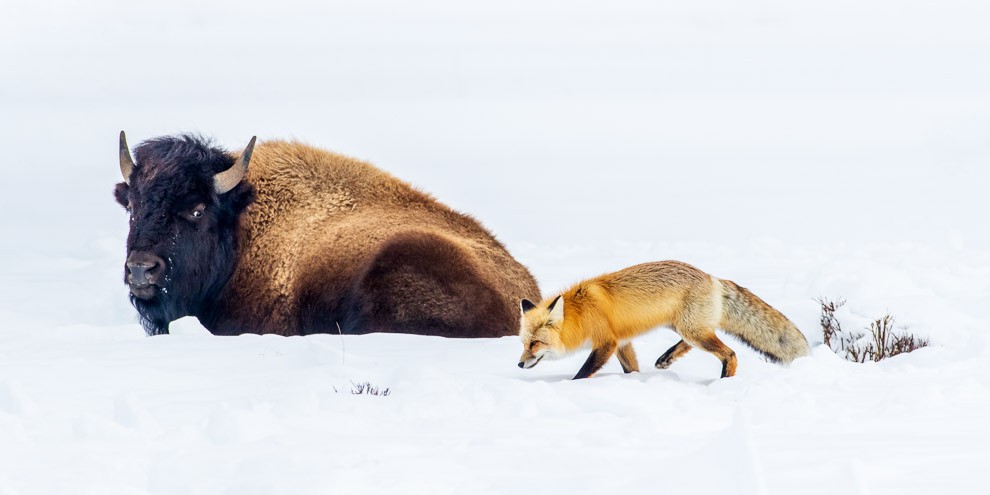

Uninvited
Foxes are generally solitary, nocturnal, and seldom seen, as they prefer to travel under cover along the edges of meadows and forests. However, in order to procure enough food during winter, foxes increase their daylight activity.
It’s then that I often find foxes poking around bison herds. As the bison methodically displace snow with their massive heads in search of grass, the resulting disruption can collapse the subnivean zone. The word subnivean comes from the Latin “sub” for under and “nives” for snow. Mice and voles winter there for protection from frigid temperatures and hungry predators. Grass, leaves, seeds, and insects are readily available and unfrozen. Several feet under the snow, these small mammals create tunnel systems complete with air shafts to the surface. When the tunnels and airshafts are destroyed by the bison, mice and voles evacuate and scamper across the top of the snow. Others, left behind in a collapsed tunnel suffocate. If you are a red fox, either outcome offers the chance of a meal.
The smallest member of the canid family, an average adult red fox weighs 11 pounds. Bull bison, the largest land mammal in North American weigh an average of 2,000 pounds while cow bison top the scales at 1,000 pounds. Yellowstone is home to more than 5,000 genetically pure wild American bison.
In February 2019, I was leading a wildlife photography workshop in Yellowstone when we spotted this fox mousing in Lamar Valley. He performed the classic mousing leap for us four times and was only successful on one attempt. He then trotted over to the small bison heard and wandered around them looking for homeless voles. The bison’s look says it all.
This photograph is available for purchase as a fine art limited edition museum quality acrylic print exclusively at GoeddelGallery.com

